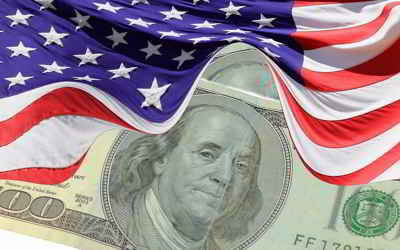Wisconsin Economy
Agriculture and Industry in Wisconsin
Wisconsin economy is a set of human and social activities and institutions related to the production, distribution, exchange and consumption of agriculture and industry goods and services. The balance between Wisconsin various economic sectors differs largely between various regions and other states in the US.Wisconsin Agriculture and Industry
Wisconsin's real gross state product in 2012 was estimated to be $225,094 which was $37,654 and 20% higher than the national state average, $187,440. Wisconsin has the 21st highest GSP out of the 50 states.
Natural resources have always been important to the economy of Wisconsin. Very early settlers were fur traders, and the population of the territory
expanded quickly when lead was discovered and began to be mined. By the early 1900s, the lumber industry began to be important in Wisconsin, and then
businesses creating furniture, paper products and wagons. During the mid-1900s, the economy gradually began to shift away from agriculture toward manufacturing.
Wisconsin is a leading state in milk and cheese production. Other important farm products are peas, beans, beets, corn, potatoes, oats, hay, and cranberries.
The chief industrial products of the state are automobiles, machinery, furniture, paper, beer, and processed foods. Wisconsin ranks second among the
47 paper-producing states. The state's mines produce copper, iron ore, lead, and zinc.
Wisconsin Agriculture:
cheese, dairy products, cattle, hogs, vegetables, corn, cranberries.
Wisconsin Industry:
Machinery, food processing, paper products, electric equipment, fabricated metal products, tourism.
The economy of Wisconsin is driven by agriculture and manufacturing. Although manufacturing accounts for a far greater part of the state's income
than farming, Wisconsin is usually recognized primarily as a farm state. Wisconsin produces more dairy products than any other state in the United
States except California, and leads the nation in cheese production. Although California has overtaken Wisconsin in the production of milk and butter,
Wisconsin still produces more milk per capita than any other state in the Union. In addition to dairying, Wisconsin ranks first in the production of
corn for silage, cranberries, ginseng, and snap beans for processing. Wisconsin is also a leading producer of oats, potatoes, carrots, tart cherries,
maple syrup, and sweet corn for processing.
Given Wisconsin's strong agricultural tradition, it is not surprising that a large part of the state's manufacturing sector deals with food processing.
Some well known food brands produced in Wisconsin include Oscar Mayer, Tombstone and Jack's frozen pizza, and Johnsonville Bratwursts. Kraft Foods
alone employs over five thousand people in the state. Through Milwaukee, Wisconsin is also a major producer of beer.
In addition to food processing, Wisconsin is home to several transportation equipment and machinery manufacturers. Major Wisconsin companies in these
categories include the Kohler Company, Rockwell International, Briggs & Stratton, and Harley-Davidson. Wisconsin also ranks first nationwide in
the production of paper products; the lower Fox River from Lake Winnebago to the Bay of Green Bay has twenty-four paper mills along its thirty-nine
mile stretch. The largest paper companies with operations in Wisconsin are Kimberly-Clark and Georgia-Pacific, both of which rank among the state's
top ten employers.
Tourism is also a major industry in Wisconsin. Tourism destinations such as the House on the Rock near Spring Green, Circus World Museum in Baraboo,
and the collection of attractions around Wisconsin Dells each draw thousands of visitors every year, and festivals such as Summerfest and the EAA Oshkosh
Airshow always attract large crowds.

US economy is relies on private decision-making ("economic freedom")




